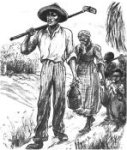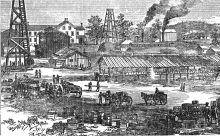
Worksheets and No Prep Teaching Resources
Reading Comprehension Worksheets
After the Civil War
(1865-1870)

After the Civil War
(1865-1870)
 Worksheets and No Prep Teaching Resources Reading Comprehension Worksheets After the Civil War (1865-1870) |
 After the Civil War (1865-1870) |
| edHelper's suggested reading level: | grades 7 to 9 | |
| Flesch-Kincaid grade level: | 7.15 |
|
The North after the Civil War
By Toni Lee Robinson |

|
 1 In the mid-1800s, the American North bustled along like a steam engine, huffing and puffing and full of energy. The Industrial Revolution was well underway. Factory-produced goods replaced handmade items. Factory jobs took the place of farming or cottage crafts for many families. The pace of life quickened.
1 In the mid-1800s, the American North bustled along like a steam engine, huffing and puffing and full of energy. The Industrial Revolution was well underway. Factory-produced goods replaced handmade items. Factory jobs took the place of farming or cottage crafts for many families. The pace of life quickened. |
Create Weekly Reading Books
Prepare for an entire week at once! |
| Leave your feedback on The North after the Civil War (use this link if you found an error in the story) |
 |
After the Civil War (1865-1870) |
 |
High School Reading Comprehensions and High School Reading Lessons
|
 |
United States
|
|
|
 | Fifty States Theme Unit |
 |
Document Based Activities |